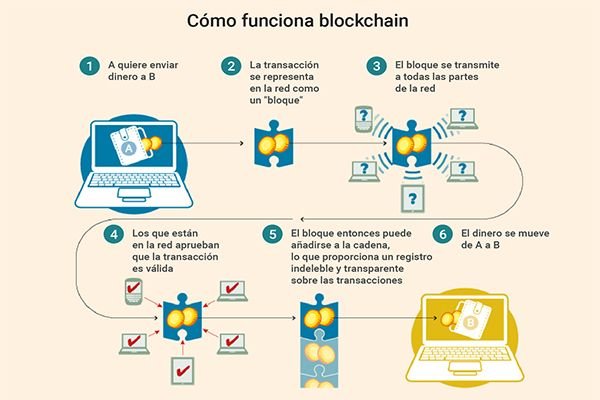What is it?
As it is a gigantic accounting book that registers all the movements in a block chain, which in turn is encrypted for its security and privacy of transactions, it is considered the leading software platform in the world for the purchase and sale of digital assets. . The Blockchain or chain of blocks is the powerful technology that gave life to Bitcoin.
But the chain of blocks has a very important requirement, there must be several users (Nodes) so that they are in charge of verifying that everything went well in all the transactions to validate them and that the block corresponding to that transaction later (In a block there are many but many transactions that are variable) in order to register it in the chain of blocks.
How does it work?

The process is simple, but involves more people, there is a large group of users who are responsible for checking that the entire process occurs as it should occur.
"A good example"
If a person wants to withdraw a Bitcoin from his wallet to give it to a friend or a relative there is a transaction that must be verified by all users (Nodes) but with a peculiarity that nobody knows who that person is completely anonymous , They only know that from their digital portfolio they want to transfer that amount to another (friend), users first check if that portfolio has a fund for the transaction, they all write down that transaction, which happens to be completed and to be part of the transaction block.
As time passes, more and more transactions are completed and passed to the block, which has a limited capacity, when a block no longer admits transactions, it is time to validate it, which is what users do when they do Bitcoin mining.
The miners
The mining of blocks is the realization of complex calculations that require time (more and more) and electricity, but when the block is finished are permanently registered in that chain of blocks, and can not be modified without altering all the blocks that are linked to it, an operation that would also require that most of the nodes validate it.

The design of the block chain itself has advantages, and for example it confirms that each unit of value (for example, each bitcoin) has only been transferred once, which avoids a traditional problem with the double spending of digital currencies or false money, which reduces the confidence of users in that currency and also in the circulation of it.

